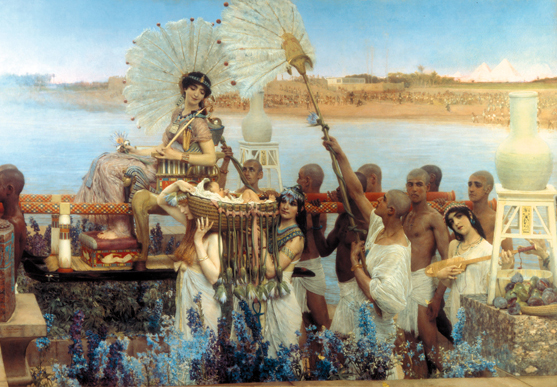Image Details

Private Collection/The Bridgeman Art Library
An as-yet unnamed Israelite infant is presented to Pharaoh’s daughter after being rescued from the Nile, in this 1904 painting by the Dutch-born English artist Sir Lawrence Alma-Tadema. The child is, of course, Moses. In Exodus 1, Pharaoh orders all newborn Hebrew boys thrown in the Nile. Moses’ mother does not, strictly speaking, disobey the command; she simply places her child in a bulrush basket before consigning him to the waters. When an Egyptian slave girl (the dark-haired woman bearing the rear of the basket) recovers the child and presents him to the princess, the infant’s sister comes forward, offering to find a wet nurse for the child. The sister then goes and gets their mother to fulfill this duty. (The red-haired woman holding the front of the basket is probably Moses’ sister or mother; the artist was likely following a tradition in European art of depicting Jews as having red hair.)
According to Exodus, Moses was named for his rescue from the water; his Hebrew name means “drawing out” (for instance, drawing something out of a river). But author Ogden Goelet suggests the name has a wholly different, but equally significant, Egyptian meaning.
